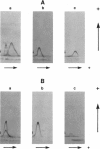Abstract
Most Caucasians have two major liver aldehyde dehydrogenase isozymes, ALDH1 and ALDH2, while approximately 50% of Orientals have only ALDH1 isozyme, missing the ALDH2 isozyme. A remarkably higher frequency of acute alcohol intoxication among Orientals than among Caucasians could be related to the absence of the ALDH2 isozyme, which has a low apparent Km for acetaldehyde. Examination of liver extracts by two-dimensional crossed immunoelectrophoresis revealed that an atypical Japanese liver, which had no ALDH2 isozyme, contained an enzymatically inactive but immunologically cross-reactive material corresponding to ALDH2, beside the active ALDH1 isozyme. Therefore, the absence of ALDH2 isozyme in atypical Orientals is not due to regulatory mutation, gene deletion, or nonsense mutation, but must be due to a structural mutation in a gene for the ALDH2 locus, resulting in synthesis of enzymatically inactive abnormal protein.
Full text
PDF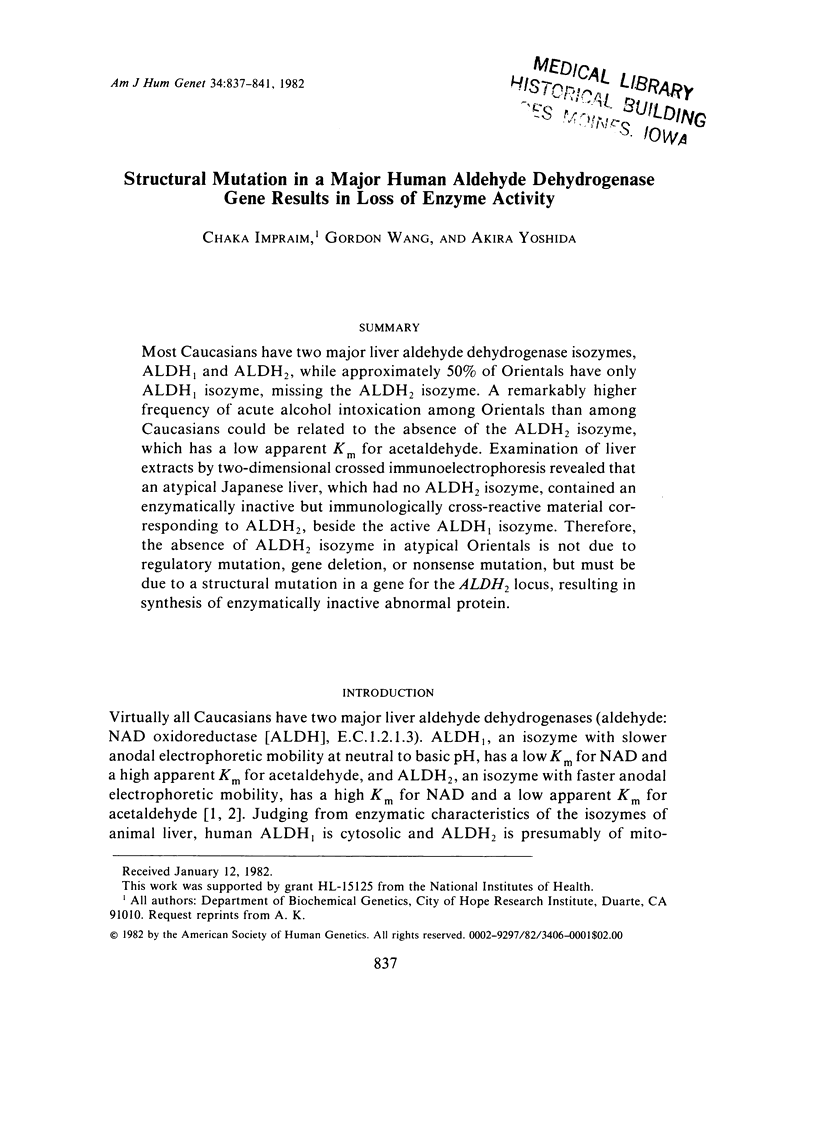
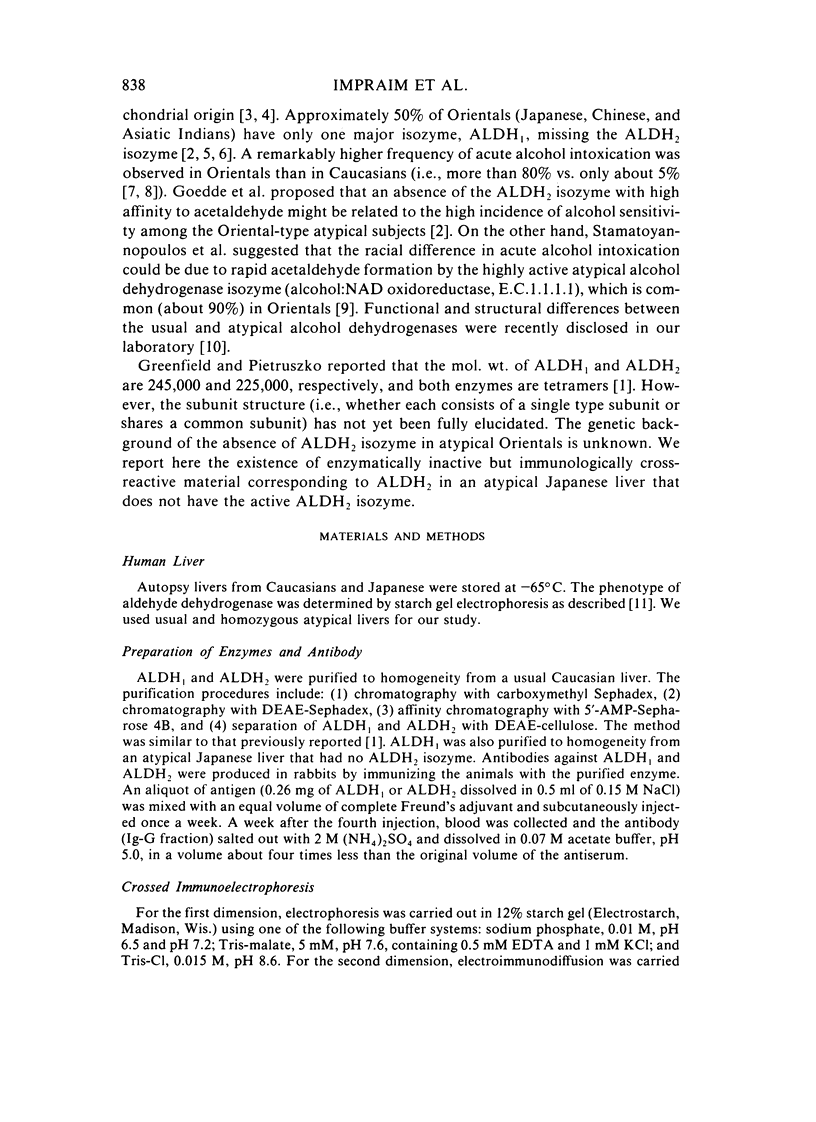
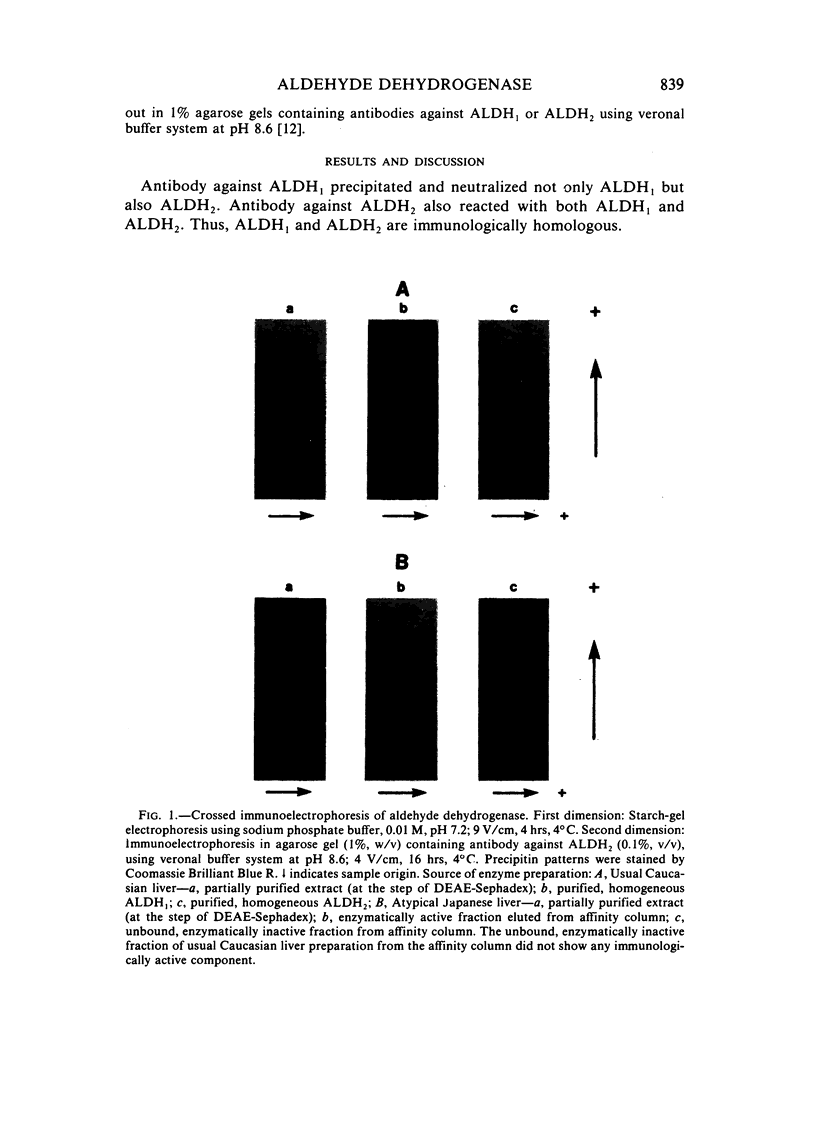
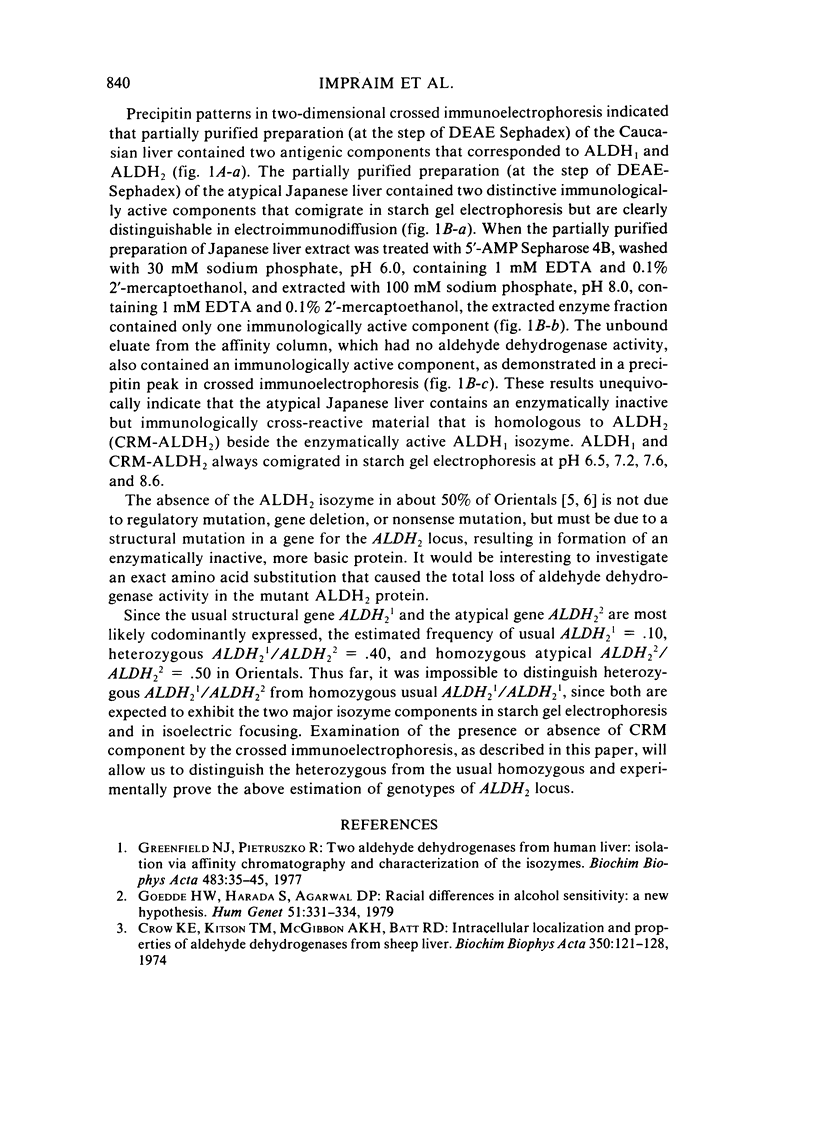
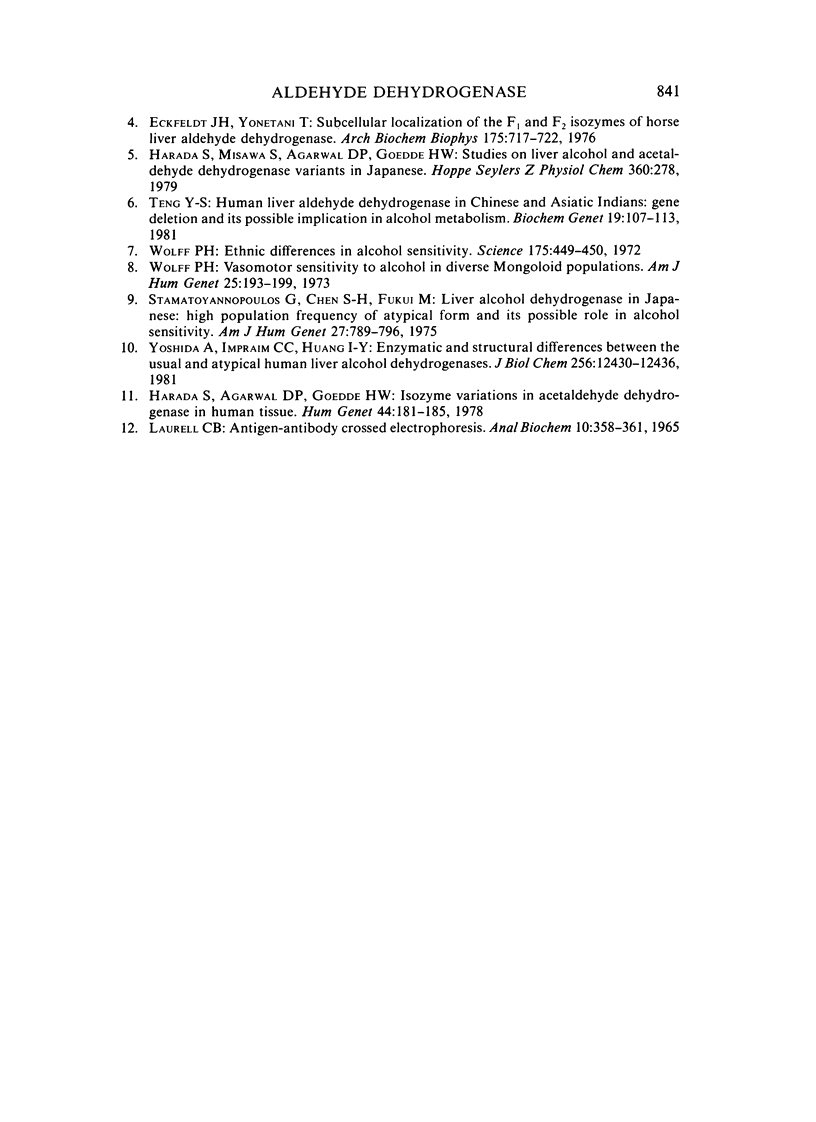
Images in this article
Selected References
These references are in PubMed. This may not be the complete list of references from this article.
- Crow K. E., Kitson T. M., MacGibbon A. K., Batt R. D. Intracellular localisation and properties of aldehyde dehydrogenases from sheep liver. Biochim Biophys Acta. 1974 May 20;350(1):121–128. doi: 10.1016/0005-2744(74)90209-5. [DOI] [PubMed] [Google Scholar]
- Eckfeldt J. H., Yonetani T. Subcellular localization of the F1 and F2 isozymes of horse liver aldehyde dehydrogenase. Arch Biochem Biophys. 1976 Aug;175(2):717–722. doi: 10.1016/0003-9861(76)90564-6. [DOI] [PubMed] [Google Scholar]
- Goedde H. W., Harada S., Agarwal D. P. Racial differences in alcohol sensitivity: a new hypothesis. Hum Genet. 1979 Oct 2;51(3):331–334. doi: 10.1007/BF00283404. [DOI] [PubMed] [Google Scholar]
- Greenfield N. J., Pietruszko R. Two aldehyde dehydrogenases from human liver. Isolation via affinity chromatography and characterization of the isozymes. Biochim Biophys Acta. 1977 Jul 8;483(1):35–45. doi: 10.1016/0005-2744(77)90005-5. [DOI] [PubMed] [Google Scholar]
- Harada S., Agarwal D. P., Goedde H. W. Isozyme variations in acetaldehyde dehydrogenase (e.c.1.2.1.3) in human tissues. Hum Genet. 1978 Oct 31;44(2):181–185. doi: 10.1007/BF00295411. [DOI] [PubMed] [Google Scholar]
- LAURELL C. B. ANTIGEN-ANTIBODY CROSSED ELECTROPHORESIS. Anal Biochem. 1965 Feb;10:358–361. doi: 10.1016/0003-2697(65)90278-2. [DOI] [PubMed] [Google Scholar]
- Stamatoyannopoulos G., Chen S. H., Fukui M. Liver alcohol dehydrogenase in Japanese: high population frequency of atypical form and its possible role in alcohol sensitivity. Am J Hum Genet. 1975 Nov;27(6):789–796. [PMC free article] [PubMed] [Google Scholar]
- Teng Y. S. Human liver aldehyde dehydrogenase in Chinese and Asiatic Indians: gene deletion and its possible implications in alcohol metabolism. Biochem Genet. 1981 Feb;19(1-2):107–114. doi: 10.1007/BF00486141. [DOI] [PubMed] [Google Scholar]
- Wolff P. H. Ethnic differences in alcohol sensitivity. Science. 1972 Jan 28;175(4020):449–450. doi: 10.1126/science.175.4020.449. [DOI] [PubMed] [Google Scholar]
- Wolff P. H. Vasomotor sensitivity to alcohol in diverse Mongoloid populations. Am J Hum Genet. 1973 Mar;25(2):193–199. [PMC free article] [PubMed] [Google Scholar]
- Yoshida A., Impraim C. C., Huang I. Y. Enzymatic and structural differences between usual and atypical human liver alcohol dehydrogenases. J Biol Chem. 1981 Dec 10;256(23):12430–12436. [PubMed] [Google Scholar]



